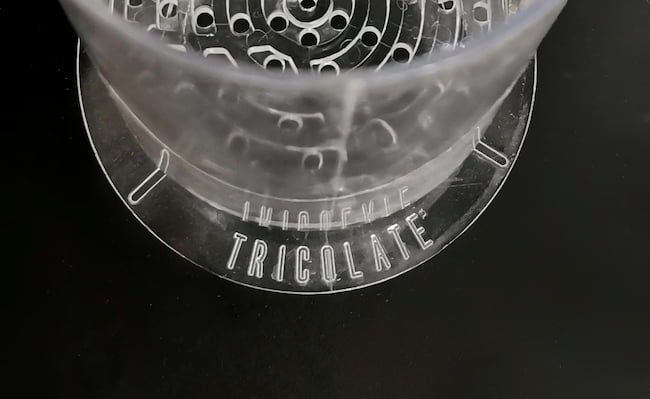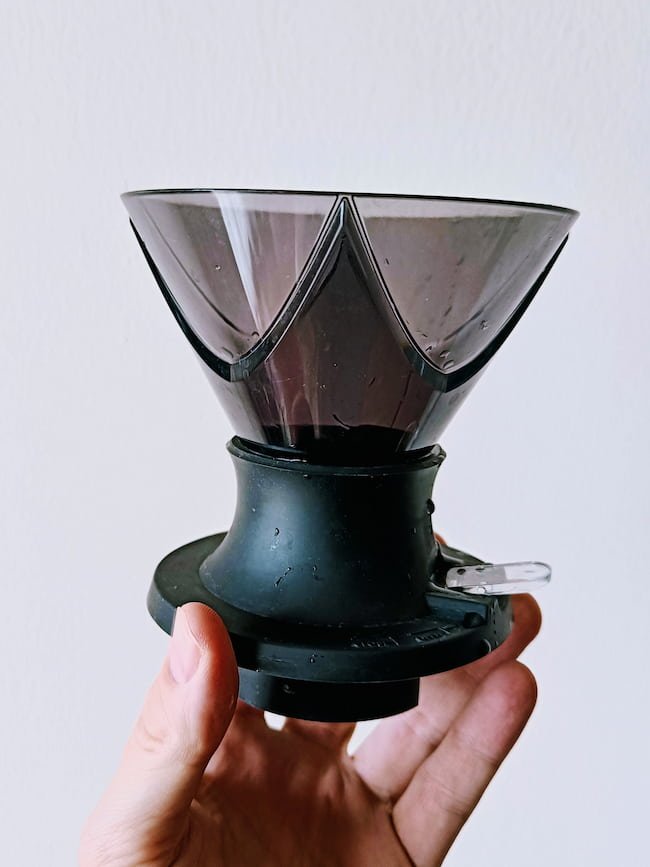For years, bypass water was either overlooked or seen as an unavoidable part of pour over brewing.
However, several new gadgets are now trying to shake things up via the concept of “zero-bypass” or “no bypass” brewing.
But why is bypass water such a big deal? And what should you do about it?
In this article, we’ll dive into those questions and explore bypass and its effects on our beloved pour overs.
What is Zero Bypass Brewing?
When water sneaks past the coffee grounds and slips through the filter’s sides without participating in the brewing process, it can lead to a weaker, less extracted cup of coffee. The water that is not involved in the brewing process is known as bypass water.
On the other hand, the concept of zero bypass brewing forces water to flow through the coffee bed, eliminating the option for it to escape through the sides of the filter.
This technique eradicates bypass water and should lead to a more efficient extraction. While zero bypass brewing requires a bit more patience and effort, the results are intriguing if you lean to the more geeky side of the coffee brewing spectrum.
This method is particularly useful for those who want to experiment with higher extraction yields.
Benefits of Zero Bypass Brewing:
- Higher extraction yield: Explore the ultimate potential of a given coffee
- Better consistency: Eliminate dry spots and channeling
- Efficient brewing: Brew more coffee with fewer grounds
Here are 4 of the most popular zero-bypass brewers

The Tricolate Brewer
The Tricolate from Australia is one of the first dedicated zero bypass brewers. It promises high extractions and a consistent brewing experience.
At first glance, it might resemble an oversized Aeropress, but instead of the plunger part, it has a dispersion screen at the top. The Tricolate achieves high extractions by using a broader and more shallow brew bed while not allowing any bypass at the sides.
While the Tricolate has some promising features, it’s not without its quirks. The slow brewing time, you will often face with this brewer, can lead to a lack of clarity and vibrancy in the cup. However, by pouring slowly and carefully, my experience has been that you can achieve more clarity and flavor separation.
The recent updates to the dispersion screen have improved the flow and distribution of water across the brew bed.
Additionally, using an alternative dispersion screen like the Gabi Dripmaster can yield remarkably consistent and delicious cups of coffee with a high extraction rate.
While it may not be perfect, the Tricolate is a worthy addition to a coffee enthusiast’s collection, offering next-level extractions and efficiency in brewing larger quantities. So, if you’re looking to push the boundaries of your coffee brewing skills and explore the world of zero bypass brewing, the Tricolate might just be the gadget for you.
Check out my review here for more details.
The Next Level Brewer
The Next Level Brewer is a no-bypass coffee brewer quickly gaining popularity among specialty coffee aficionados.
Its wider diameter and increased surface area compared to the Tricolate, increase the total volume it’s possible to brew.
It also has a slightly different design compared to the Tricolate that at least on the surface seems a bit easier to use and clean. I haven’t used the Next Level yet, but planning to add it to my brewing arsenal sooner or later.
By the way, Next Level is soon introducing a new model with a steep and release valve plus a smaller capacity that is designed to compete with the Tricolate and hybrid devices such as Hario Switch and Clever. It looks quite promising.
The downsides of the Next Level are very similar to those of the Tricolate: The paper filters are proprietary and can be difficult and expensive to source. Also, it will have some of the same issues when it comes to slow brews and potentially dull-tasting cups.
OREA V3
The OREA V3 Coffee Dripper has made its entrance into the world of zero-bypass brewers, with a design that’s both innovative and reminiscent of the renowned Kalita Wave.
Unlike the Wave, however, the OREA V3 eschews internal ridges. This simple yet profound modification enables the filter paper to cling perfectly to the walls, providing a more uniform and consistent brew.
The OREA V3 presents a dual brewing persona. With a standard Kalita filter, it functions as a typical pour-over dripper. However, with the addition of special flat filters and a clever device dubbed “the negotiator”, you can fold the filter to fit snugly inside the dripper. This close contact with the dripper walls helps to reduce bypass, enhancing the quality of the brew.
This meticulous brewing method does come with a cost, mirroring the slow approach of the Mugen, another zero-bypass brewer. However, for those with patience, the resulting cup of coffee may well prove to be worth the extra time.
While the unique filter folding method can be somewhat intricate, it’s a bit too involved for my taste. So while the OREA V3 has quickly amassed a loyal following, I don’t own one.
But despite its complexity, many coffee enthusiasts are embracing the OREA V3 and its flexible brewing approach.

Hario Mugen
The Mugen, made by Hario, takes a more moderate approach to prevent bypass water from diluting your coffee.
Its distinctive cone-shaped design is similar to the V60, but the difference lies in the lack of ribs or spirals inside the walls. Because of this, the paper filter will be completely flush against the walls of the brewer.
This design ensures uniform water flow through the coffee bed and makes it more difficult for bypass water to escape.
The downside is that the brewer is also a lot slower than a typical cone-shaped brewer. You might notice a bit of a theme here: Zero-bypass brewing often means rather slow brews.
My Take on Zero Bypass Brewing: Is It Worth the Hype?
Although zero bypass brewing has its dedicated followers, I’m not entirely convinced by this trend. To me, it feels more like a theoretical pursuit for coffee geeks than a practical innovation for everyday coffee lovers.
Allow me to break down my reasons:
- Traditional brewing ratios (1:15-1:17) already produce great-tasting coffee, bypass water included. If the end result is enjoyable, why fix what isn’t broken?
- Brewing a palatable cup of coffee at the 1:18-1:22 ratios proposed by zero bypass enthusiasts is quite challenging while sticking to the familiar ratios and allowing some bypass is simple and effective.
- Also, If bypass water is truly the enemy, why do Americanos taste good? Espresso brewing involves no bypass water, and the added water in an Americano is essentially bypass water. Perhaps a bit of additional water in the cup is like a canvas that allows some breathing space for the coffee flavor.
Interestingly, even the creators of the Next Level Brewer recommend adding bypass water. They argue that most extraction occurs within the first couple of minutes of brewing, and adjusting the amount of bypass water gives more control over dilution ratios.
While this approach may be valuable for coffee scientists, it doesn’t make much sense for the average coffee drinker, as it complicates the process rather than simplifying it.
My personal verdict
In my opinion, the best cup of coffee should be achievable with affordable equipment and minimal fuss.
Zero bypass brewing and the pursuit of high extraction yields contradict this philosophy, as they require pricey equipment such as unimodal flat burr grinders and fancy refractometers to fully engage in the brewing style.
While brewing a drinkable cup of coffee at a 1:22 ratio will surely impress your coffee-geek buddies, I question its practical value.
In the end, the goal is to enjoy a delicious cup of coffee without unnecessary complications, and zero bypass brewing seems to miss that mark.
